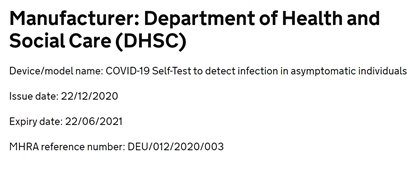
Great summary and we really need to take the toxicity out of this. Agree with >95% of what is here. Thx for taking time to do this. The big challenge is how we make quick progress without being able to get a ref std for infectiousness. Cluster RCTs great but hard to do.
https://twitter.com/ScienceShared/status/1350141171994144768
Part of my 5% disagreement arises in whether we are making a mistake in trying to force “infectiousness” into the test accuracy paradigm, or whether we could do better considering it in a different way. It is a probabilistic rather than binary concept which causes the problem.
We can classify people as more or less likely to infect others, but I don’t think we will ever successfully put people into two groups of those who do or do not infect somebody else from a test. That is unlike our ability to say that people do or not have detectable virus.
Any Ct threshold chosen to define “infectious” or “not infectious” is really a division between different risks of being infectious. Infectiousness is a continuum, and our methods need to deal with that.
We need good and validated predictive models which convert things we know about a person into probability estimates of infecting others. Good research is developing these, but they need validating in different settings.
Then we can either “integrate” probabilities across test positives and test negatives (similar to what has been done here) to get a measure of the risks of infection in the two groups (we would have to think carefully about what those numbers mean).
Or we define a minimally accepted risk of infectiousness and quote percentages above that using the model. The acceptable risk of infectiousness of course will be situation dependent. When no risk is accepted, then we end up back with the “being infected” situation.
None of this is going to be as scientically certain as information about "infected or not", but it could give us some quantities which allow us to more honestly summarise what we know about infectiouness and how certain we are about it.
Putting this out there for thoughts and reactions?
• • •
Missing some Tweet in this thread? You can try to
force a refresh





